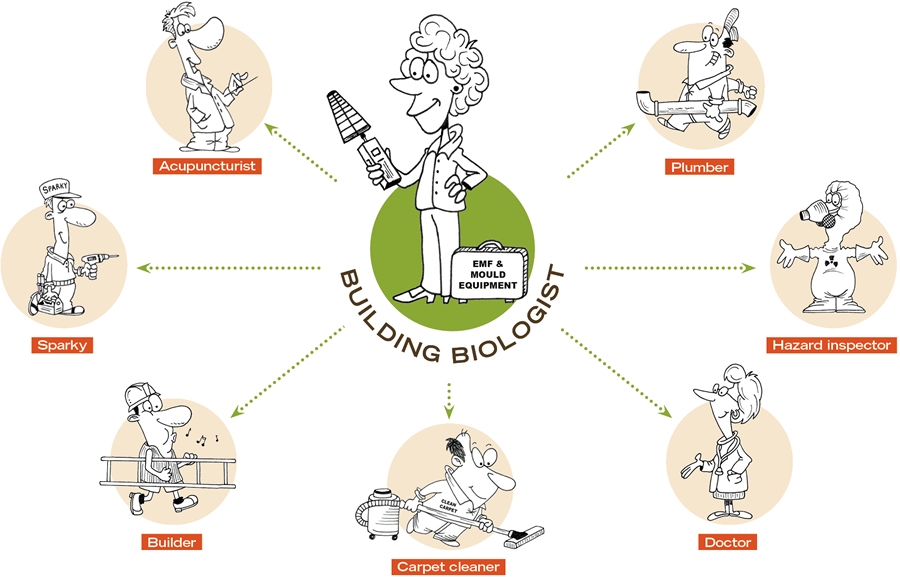What is Building Biology?
Building biology is a science that investigates the health hazards in the built environment. This can be anything from chemicals in building materials and household products to lead dust, noxious gases, house dust mites, allergens, mould, electromagnetic fields, drinking water contaminants and geopathic stress.
The industry began in Germany in the 1970s in response to the number of sick ‘energy efficient’ buildings created to conserve energy costs during the oil embargo.
What is Building Biology? Wellbeing Magazine May 2016
A Building Biologist is an indoor environmental consultant who is trained to identify and address the health hazards in the built environment from air, water and biological contaminants to electromagnetic fields. Much of their work involves educating the occupants about the health hazards typically found in a building, and providing realistic and cost-effective solutions to address them. As a result of the diverse knowledge and skills gained by this nationally accredited Building Biology Course, building biologists branch out into several fields: electromagnetic field testing, mould auditing, allergens and healthy building design.
A building biologist conducts audits in
 electromagnetic fields – AC magnetic fields arising from 50Hz frequency (high voltage transmission lines, distribution lines, substations, and appliances that draw current such as the fridge and stove) and radio waves used in wireless technologies (Wi-Fi, mobile phones, blue tooth, cordless phones, smart meters and baby monitors..). Both of these fields have been classified as Group 2B possibly carcinogenic to humans according to the World Health Organisation.
electromagnetic fields – AC magnetic fields arising from 50Hz frequency (high voltage transmission lines, distribution lines, substations, and appliances that draw current such as the fridge and stove) and radio waves used in wireless technologies (Wi-Fi, mobile phones, blue tooth, cordless phones, smart meters and baby monitors..). Both of these fields have been classified as Group 2B possibly carcinogenic to humans according to the World Health Organisation.- indoor air quality – noxious gases, plastics, chemicals in paints, solvents, lacquers, household products and building materials…
- mould – identifying the type and prevalence of mould as well as identifying the sources of moisture in the building
- allergens – provide advice on the sources of dust, house dust mites, pollens and pets
- how to build a healthy, low allergy home – takes into consideration passive ventilation, lighting, indoor air quality, assesses building materials for VOC emissions, particulates, radioactivity, hygroscopicity and their life cycle analysis.
- pre-inspection audits – to identify potential health hazards
- how to create a healthy home – provide guidance on how to reduce allergens in the home, how to clean the home with minimal chemical use, pets – do and donts, what type of vacuum cleaner to buy, airing bedding, dampness issues, what containers to store food and beverages in and so on..
Want to Learn More?
To gain a greater perspective of the work we do as building biologists, read Healthy Home Healthy Family and go to Healthy Home Expert.

